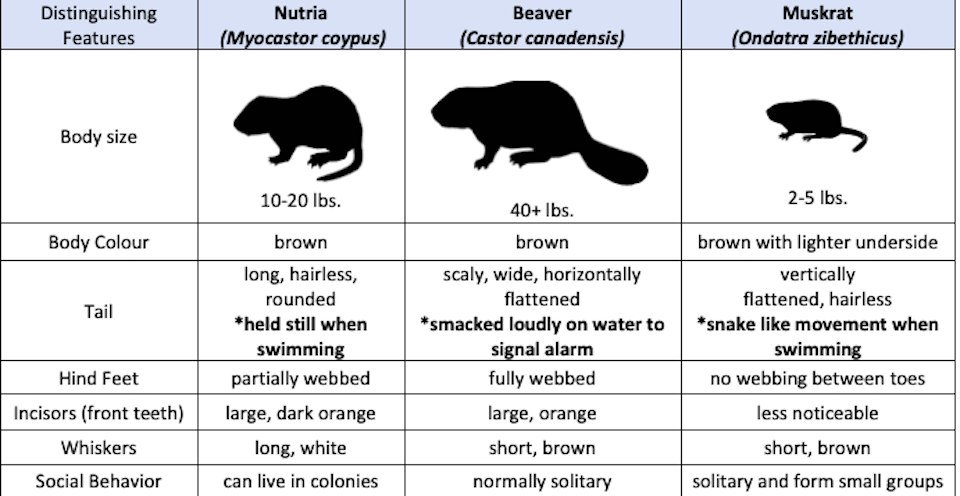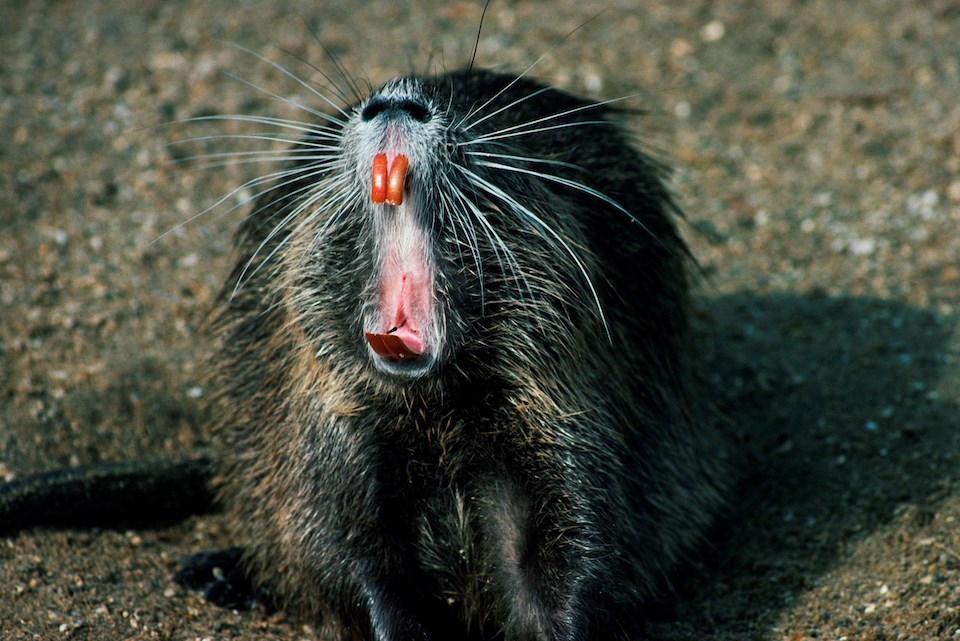It's about the size of a beaver (and looks like one) but it has some decidedly rat-like features -- and it isn't supposed to be here.
The nutria has taken up residence in the Lower Mainland as an invasive species, particularly in places that offer ideal conditions for it to thrive, such as in wetlands.
Originally from South America, the animals were introduced to B.C. for fur farming and can take to the province like fish to water --- or in this case -- semi-aquatic rodents to local marshland.
But their presence in B.C. has the potential to wreak havoc on ecosystems and the native species that call them home.
Commonly confused with muskrats and beavers (two species native to B.C.), the nutria shares some common characteristics with both large rodents. For one, they share a common habitat, preferring to dwell in places with ample aquatic vegetation, such as marshes, ponds, and slow-moving streams. They are also all some variation of brown, although they may vary in shades.
However, there are some noteworthy differences between nutria and their local lookalikes.
Beavers, muskrats, and nutrias -- oh my! How to tell the difference between the three water rodents
Beavers have wide, flat tails, while muskrats have thin, tapering tails. Also, beavers are larger and have more prominent ears, Megan Manes, Public Environmental Educator at the Stanley Park Ecology Society (SPES), told V.I.A. in a previous interview.
Similar to muskrats, nutria tails are also thin. However, muskrats have scalier tails with flat sides while nutria tails are rounded and hairless. Despite muskrats having the word "rat" in their name, nutrias have a more "rat-like" tail. They also hold their tail still while swimming while muskrats move theirs in a "snake-like" pattern, according to B.C.'s Invasive Species Guide.
Beavers are the largest of the three rodents, clocking in upwards of 40 pounds, while nutria are less than half the size, weighing 10. to 20 pounds. Muskrats are significantly smaller, weighing under five pounds.
And while beavers may also have orange-hued teeth, a nutria's trademark dark orange chompers really stand out. They also have long white whiskers, compared to the short brown ones on a beaver's face.
Beavers and muskrats are fairly solitary, but nutrias can live in colonies.

Why nutrias are a problem in B.C.
Despite their benign appearance, the B.C. government has placed the nutria on its priority invasive species list because they can cause harm to local ecosystems.
The animal has destructive feeding and burrowing habits that threaten wetland habitats, agricultural crops, and infrastructure.
Nutrias fall under B.C.'s "prevent" category because it has been determined to be high-risk but is not yet established." The government's objective is to prevent the introduction of more individuals and the establishment of the species.
Unfortunately, these animals can spread quickly, "as females can have up to 13 offspring per litter (average is 4-5) and up to three litters per year," according to the province.
If you see a nutria in the wild, report the sightings using the Report Invasives mobile apps. The apps can be used off-line as well. You can complete the report when you are at the invasive species location, click 'Submit' and the report will be sent as soon as you are back in cell coverage.
If you do not have a smartphone, you may report using the online form or via email to [email protected] (attach your photo to the email).




